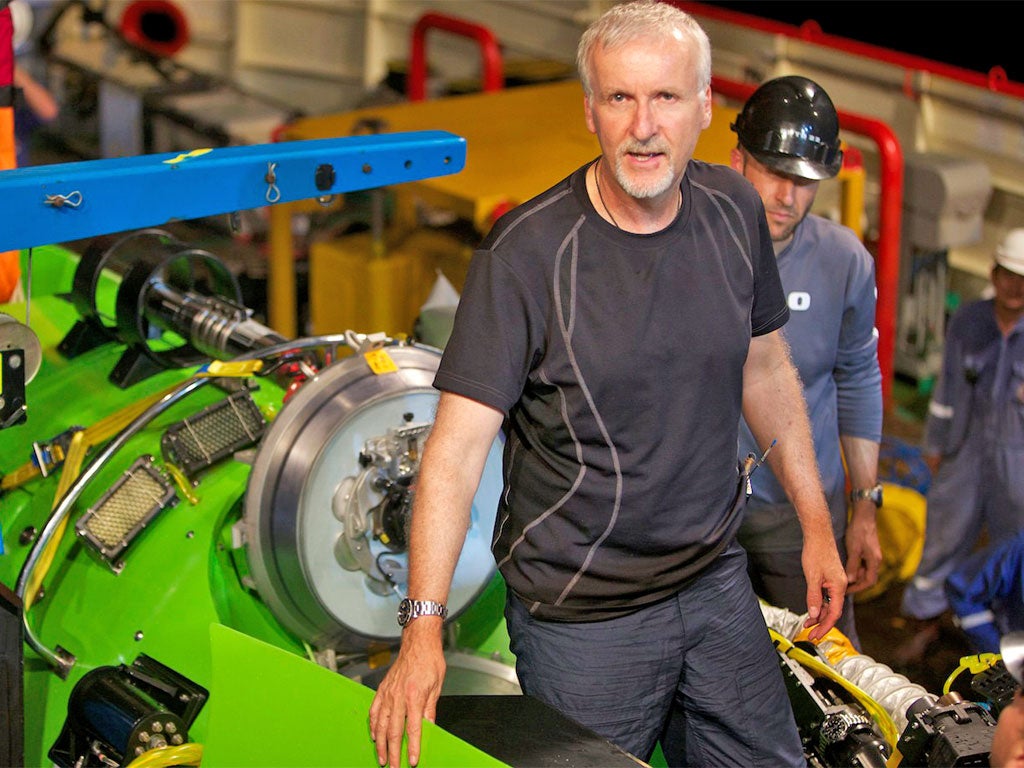Into the abyss... James Cameron sets sail on voyage to bottom of the sea
Titanic director set to become first person in 50 years to reach foot of the Mariana Trench

The objects that inspired some of his greatest cinematographic successes lie deep below the waves, but now, the film director James Cameron plans to explore even further into the watery unknown. Today he will set out for the deepest point of the world's oceans in a submersible in which he will hardly be able to move.
Click HERE to view graphic
The director of Titanic and The Abyss will attempt to lead only the second manned expedition to the bottom of the Mariana Trench, seven miles below the surface of the western Pacific Ocean.
Cameron has enlisted many of the teams he used to make his films for help in his mission; his project manager, John Garvin, is a former star of the West End musical Buddy who gave up acting to pursue a career as a diving instructor.
The nine-hour descent will be both lonely and cramped. His bright green, one-man submersible – the Challenger Deep – weighs 11 tonnes and is more than 7m long, but has an internal compartment measuring only 109cm across, the width of a shower cubicle.
Its small diameter means the 6ft 2in Cameron will barely be able to move his arms and will have to keep his legs bent. He has even had to take up yoga to be able to prepare his body for the tight fit.
Discomfort is a price he is prepared to pay, however. "Every single dive, I'm going to see something no one's ever seen before," said Cameron. "I'm going to do my best to image it, light it properly, bring it back in 3D – grab samples if I can, grab rocks if I can.
"We are there to do science, but we are also there to take the average person who only imagines these things and show them what it is really like."
When he arrives in the trench – which, weather permitting, he hopes will be today – Cameron will be boldly going where very few indeed have gone before, and with good reason. The pressure will be equivalent to 1.1 tonnes per square centimetre – a little less than the weight of two small cars.
"More people have been on the Moon than have been to the deepest part of the ocean," said Dr Carol Turley of the Plymouth Marine Laboratory. "There is little knowledge and it is exciting to think of what might be found."
The only previous manned dive to the bottom of the trench, 35,814 feet below sea level, was led by former US Navy captain Don Walsh and Swiss oceanographer Jacques Piccard, in 1960.
Through the cracked window of their submersible, they reported seeing a dark brown "diatomaceous ooze" covering the sea floor, along with shrimp and some fish that appeared to resemble flounder and sole.
And while the director said he hopes to observe the trench floor, the amount of wildlife he is expected to find there is extremely limited. An unmanned mission in 2009 found only six animal species, including worms, sea cucumbers and crustaceans.
The Mariana Trench lies off the island of Guam. A small valley named Challenger Deep is the deepest part of the ocean, and Cameron's target.
Join our commenting forum
Join thought-provoking conversations, follow other Independent readers and see their replies
Comments